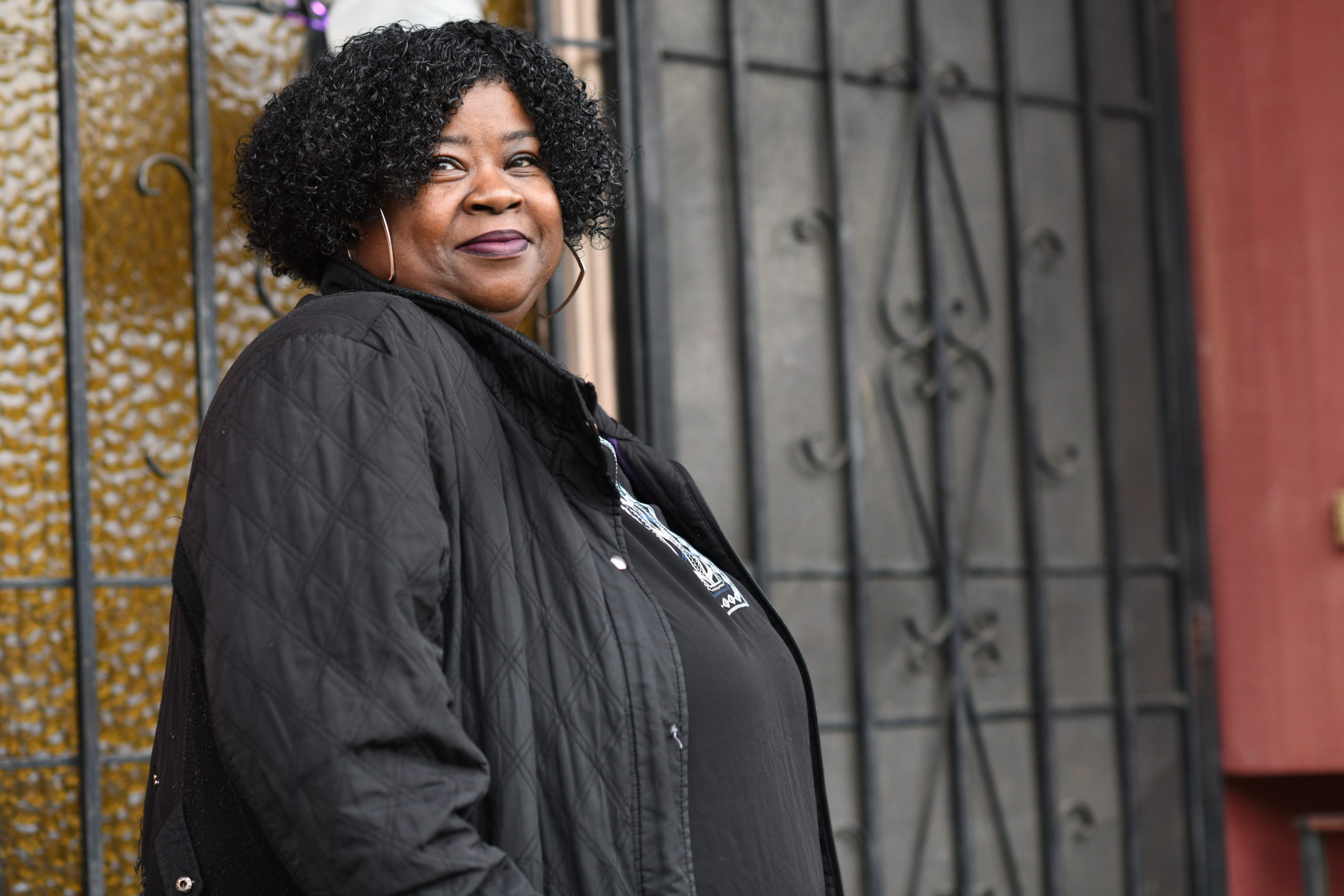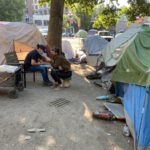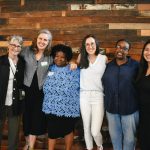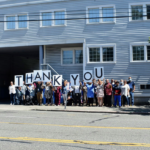
This month is REACH’s 25th anniversary. We interviewed the four REACH directors to highlight each of the mission areas — community justice, outreach, integrated care, and housing.
Brandie Flood is the director of community justice. She started with REACH more than 10 years ago as REACH Respite Case Manager and was later promoted to REACH Supervisor. Brandie then became the LEAD Program Manager and, when the director of community justice position was created, she was the best person for the job.
We sat down with Brandie three months into her new role to learn more about her vision is for the future of community justice at REACH.
Do you have a personal connection to REACH’s work or mission?
I think everyone who works for Evergreen Treatment Services (ETS) or REACH has a personal connection to this issue. You really have to have a heart built for this work to be out here. For me, it is being able to bring people home and show them the options that they have in life. We need to have the respect and dignity to be able to give folks the room to be who they are.
This work has been ingrained in me since I was a young girl. I grew up watching my grandma bringing anyone and everyone who needed help in when they needed it, so that’s how I learned to go through life. Why I do this work is because I love the social work profession, low income and communities of color, and the the population we serve. These people have been ignored and dismissed because of their mental health, substance use, and homelessness. I come from a family that doesn’t believe in leaving anyone behind. REACH is an organization that doesn’t leave anyone behind. REACH’s mission was the perfect match for my personal and professional goals to serve communities. The moment I don’t love it anymore, I’m going to have to find somewhere else to work, because this is not work you can do without loving it.
What is your vision for the Director of Community Justice position and how does it align with the organizations renewed focus on health equity and racial and community justice?
I would love to put REACH out of business within communities of color. As a White-led organization, it is at times hard for people of color to trust and identify with us. Eventually, I want to have groups led by people of color spearheading this work.
Before 2020, law enforcement was the referral source for individuals to be enrolled in the LEAD program. I knew one thing, and that was that law enforcement are going to arrest Black people, so if anyone is going to be doing these diversion programs, it should be people of color. Since 2020, we have been getting referrals from community members and Law Enforcement in to the program.
More established organizations like ETS, Public Defender Association, and Downtown Emergency Service Center currently have more infrastructure and capacity to accomplish more and have been working within homeless services for many years. Our goal is to partner with community-based organizations of color to share knowledge and capacity on issues of harm reduction and serving unhoused individuals living on the street and in encampments. These community-based organizations have not had access to the resources to provide robust services to the unhoused drug user community, however, because they are rooted in community, they are best suited to provide culturally fluent services.
We can believe in the work REACH and our partner organizations do while also understanding that the reason we are in these positions is because we are White-led. It’s our responsibility to take that privilege and our connection to systems of oppression and ensure that we are advocating for and building up the people and organizations rooted in their communities.
Approaching the 25th anniversary of REACH. Looking forward another 25 years, where do you hope REACH will be? What world will REACH have helped to build?
I want to put us out of business, but we need to move south to do this work: Renton, Kent, Tukwila, Federal Way. I’d love for us to expand to all of those places, with enough capacity to do meaningful work. I’d love to do real harm reduction across the state, especially for low-income communities and communities of color. REACH is a leader in this work, so I’d like to see us expand and reach all the communities who need us.
What do you say to potential donors of color?
This is something I’ve struggled with since the beginning of the pandemic and the racial reckoning around the country. In the beginning, I was being quiet because I work for a White-led organization, but I quickly realized that I don’t have to be apologetic because I know who I’m serving, and they still need to be served. As I’ve said, I have great respect for community-based organizations of color and believe they play a critical role. But REACH currently serves people of of color that they do not serve – chronic drug users, folks with severe behavioral challenges, and the unhoused. Due to the war on drugs and how it’s impacted communities of color, it has made it difficult for these communities to embrace harm reduction in a way that is effective in serving people who fall into these groups.
I would invite those donors of color to take a deeper dive into the work we’re doing and realize the systems that are in place. Communities of color haven’t been funded in the way ETS has—and orgs like ETS have been drastically underfunded in comparison to things like prison and police forces. We can find common ground to do this work together in a meaningful and cross-cultural way.
What is most special to you about this program?
I love that there is almost no barrier to participating in REACH’s services. People can come how they are. Showing up angry, intoxicated, upset, or high would disqualify someone from services in most facilities. We will keep showing up for you just like a loving family would. We love you and will work together to get you where you want to be.
Another thing that is special to me is how we went to bat for racial justice in how people are referred to our programs. When I started, the only way into the respite program was through the hospital where mostly White men were being referred, but now that we understand those systems more thoroughly, the barriers have been shattered.
What about life outside of work? What do you do for fun?
What’s life outside of work? I have over 300 vacation hours saved up, because I haven’t taken any time off. I always feel nervous about leaving, but then I remember that self-care is an important part of being able to serve our clients to the fullest.
When I’m off work, I like to spend time with my community. I live in the same neighborhood I grew up in, Rainier Beach. Some of the same friends I’ve had since first grade still live here. With these friends, my daughter, and my other family, we work hard, but we also know how to play hard and enjoy ourselves.
Each night, I take two hours to myself. I’ll go outside and relax, listen to music, and read Harlem Renaissance literature like Langston Hughes and a short story writer J. California Cooper. Oh, and I love all Octavia Butler! Sometimes I’ll reread Parable of the Sower just to feel connected.
What do you wish the average person knew about homelessness and REACH’s work?
These are everyday people that we serve. They are not “other.” They could be any of us. What we do for the least fortunate in our community is the most important. People don’t like to see homelessness because it is the worst part of our society and it reminds people that we haven’t taken care of our people in the way that they need. There weren’t systems created for these people, they are on their own and I want people to remember that.
About REACH’s work, I want people to know that we are doing the real work. Lots of people talk about this harm reduction and homeless services in theory, from a bird’s eye view, but we are doing it in practice. We use theory and believe in evidence-based practices, but we are doing the real deal and our staff reflects the community that we serve.




